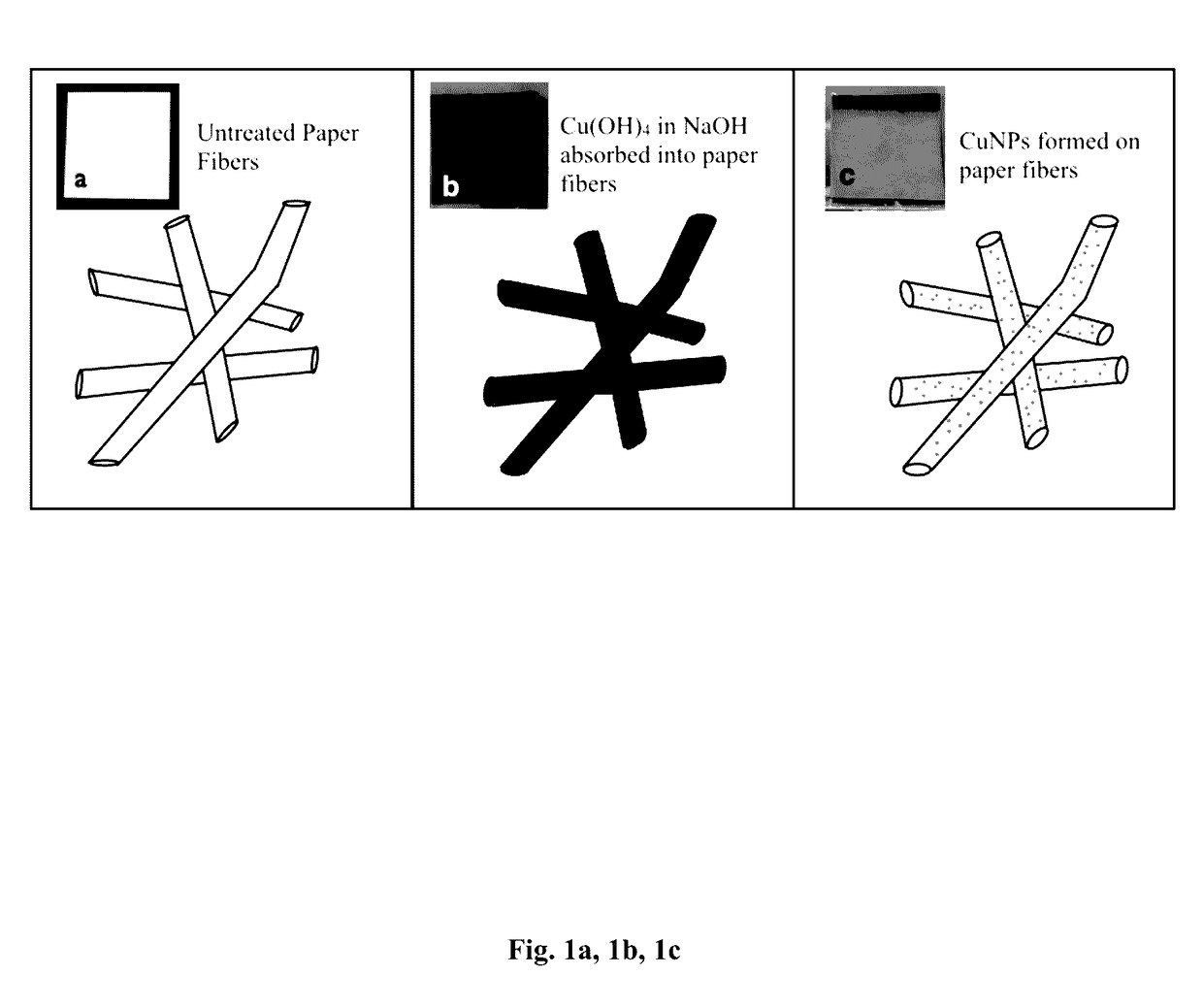Compositions and methods for preparing copper-containing paper and uses thereof
a technology of composition and paper, applied in the field of composition and paper preparation, can solve the problems that none of these researchers have evaluated these copper nanoparticle membranes as drinking water purifiers, and achieve the effect of convenient making and use, and being cheap
- Summary
- Abstract
- Description
- Claims
- Application Information
AI Technical Summary
Benefits of technology
Problems solved by technology
Method used
Image
Examples
examples
[0099
[0100]Materials and Methods
[0101]Absorbent blotting papers made from bleached softwood kraft pulp were used (made by Domtar Inc. and supplied by FP Innovations, Pointe-Claire, QC). The sheet thickness and grammage are 0.5 mm and 250 g / m2, respectively. Copper sulfate (CuSO4), ascorbic acid (C6H8O6), 30% hydrogen peroxide (H2O2), concentrated sulfuric acid (H2SO4), dipotassium phosphate (K2HPO4), monopotassium phosphate (KH2PO4), tryptone, yeast extract, and sodium chloride were purchased from Fisher Scientific and used as received. Colilert® Quanti-Trays 2000 were purchased from IDEXX Laboratories, Westbrook, Me. Water treated with a Barnstead Nanopure system was used throughout.
[0102]Preparation of Copper Nanoparticle Paper
[0103]We immersed sheets of blotting paper (10 cm by 10 cm) in freshly prepared alkaline solutions of copper hydroxide (0.8%) for 1 hour to 2 days. Alkaline copper hydroxide solution was prepared by adding 1 M NaOH to 0.32 M CuSO4 solution to form gelatinous...
PUM
| Property | Measurement | Unit |
|---|---|---|
| thickness | aaaaa | aaaaa |
| thickness | aaaaa | aaaaa |
| time | aaaaa | aaaaa |
Abstract
Description
Claims
Application Information
 Login to View More
Login to View More - R&D
- Intellectual Property
- Life Sciences
- Materials
- Tech Scout
- Unparalleled Data Quality
- Higher Quality Content
- 60% Fewer Hallucinations
Browse by: Latest US Patents, China's latest patents, Technical Efficacy Thesaurus, Application Domain, Technology Topic, Popular Technical Reports.
© 2025 PatSnap. All rights reserved.Legal|Privacy policy|Modern Slavery Act Transparency Statement|Sitemap|About US| Contact US: help@patsnap.com



